Music / Textual analysis




Are you sure you want to delete your annotation? You cannot undo this action.
When studying a music video, it is always helpful to break it down and analyse some of the key shots.
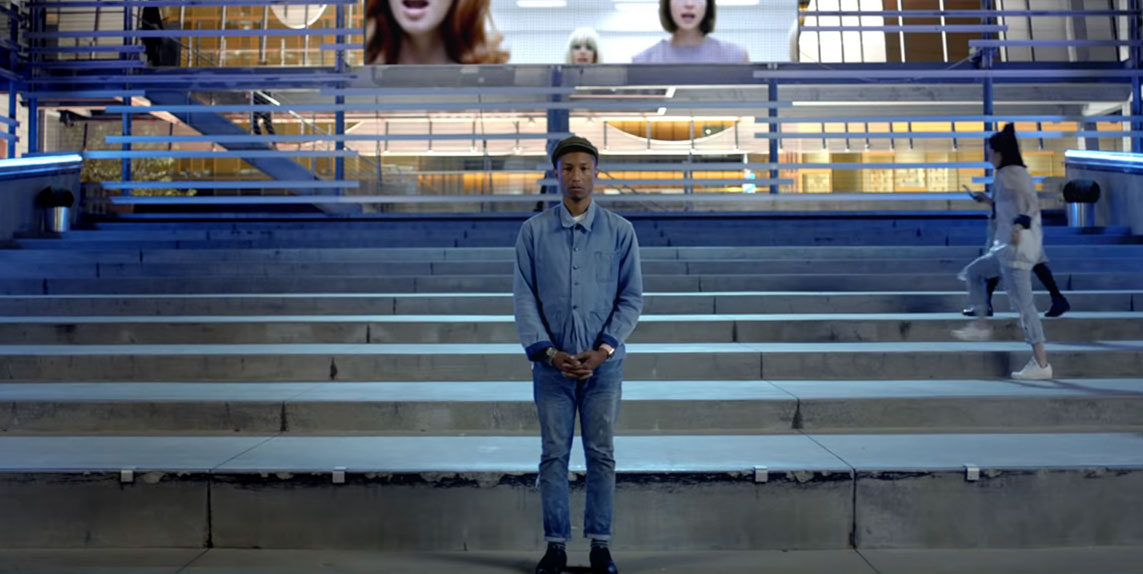
Artist addresses us directly - building intimacy with the audience.
He is standing still, calm, as if he is giving a speech or sermon. Creates serious atmosphere.
Dressed in plain light blue clothes - ‘blue-collar’ is an American phrase for a low skilled, low paid worker. The lack of expensive clothes show Pharrell is a ‘man of the people’.
Anonymous modern urban location - cold blue lighting contrasts with warm colours in non-Western locations.
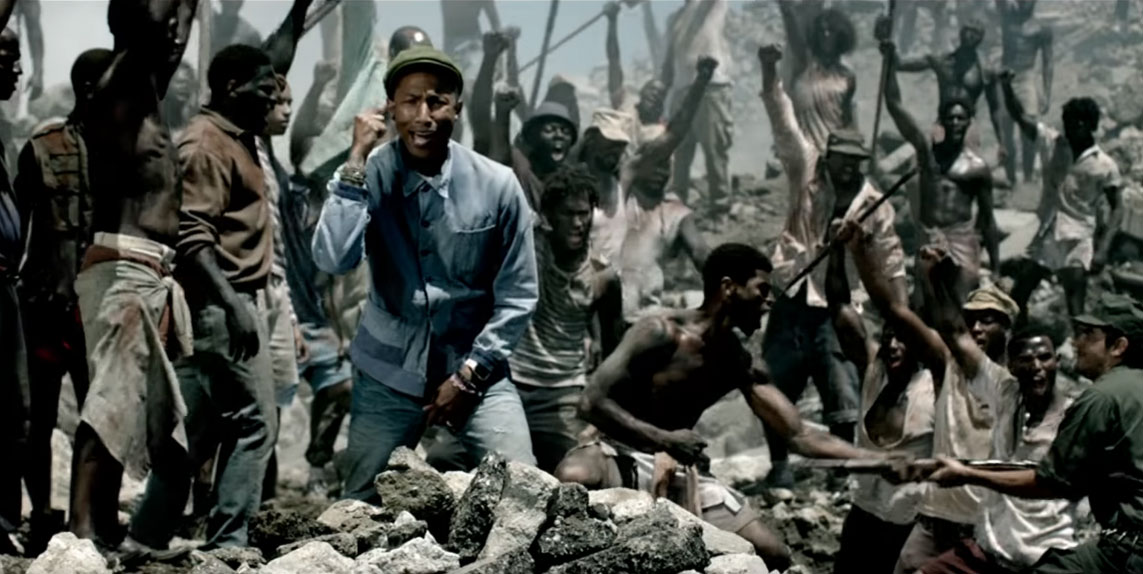
Group shot, with artist in the centred foreground. This shows he is the star, but by placing him in the midst of the crowd - who seem to be reacting to his ‘call-to-action’ - he seems like a ‘man of the people’.
Washed out colours emphasise the oppression and despair that the slaves feel. But their body language is now angry and triumphant as their revolt begins. The image echoes the ‘chain gang’ system used in America during the slave trade, referencing a key historical context.
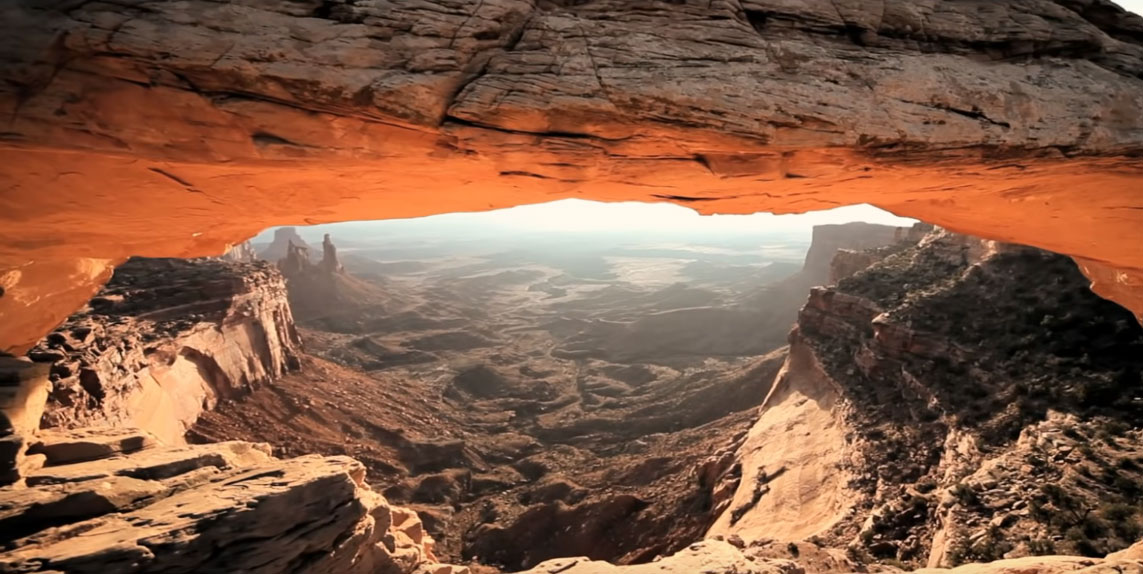
Panoramic, wide/extreme long shot - used to convey the grandeur and spectacle of the canyon.
By using ‘montage’ editing, the video combines images of human culture with these of unpopulated nature, suggesting a strong connection between man and earth.
The warm orange tones are in contrast with the washed-out grey of the mine, and the cold blue of the city in the opening.
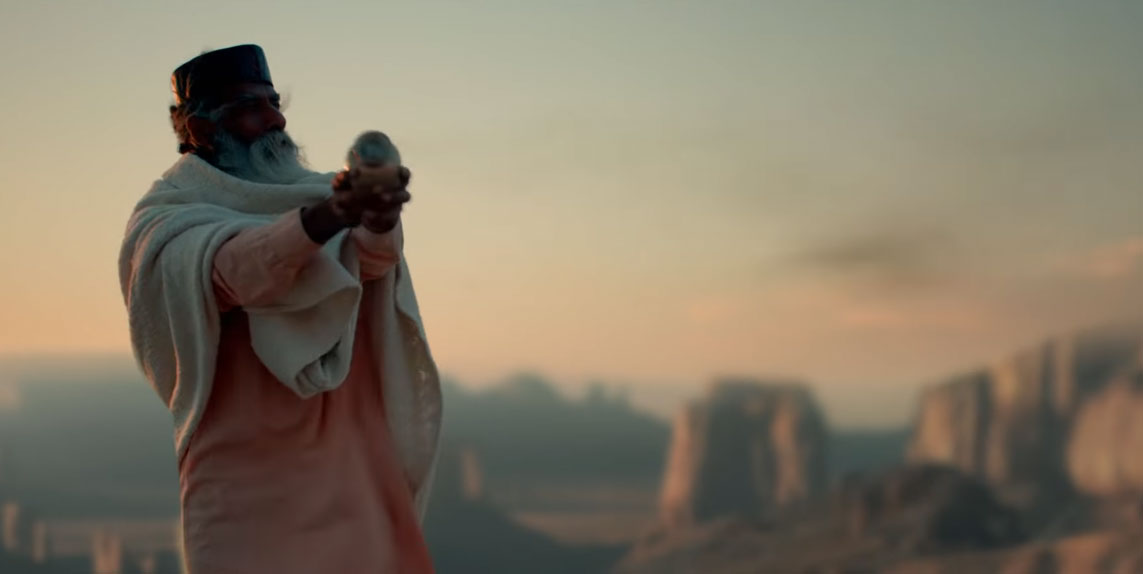
Long shot of a holy man performing a ritual. His attire suggests he is someone important and his beard connotes wisdom. The valley and mountains behind him look very similar to the previous image, strengthening the connection between man and nature.
His traditional dress and ritual suggest that non-Western cultures are closer to nature than Western, modern society.
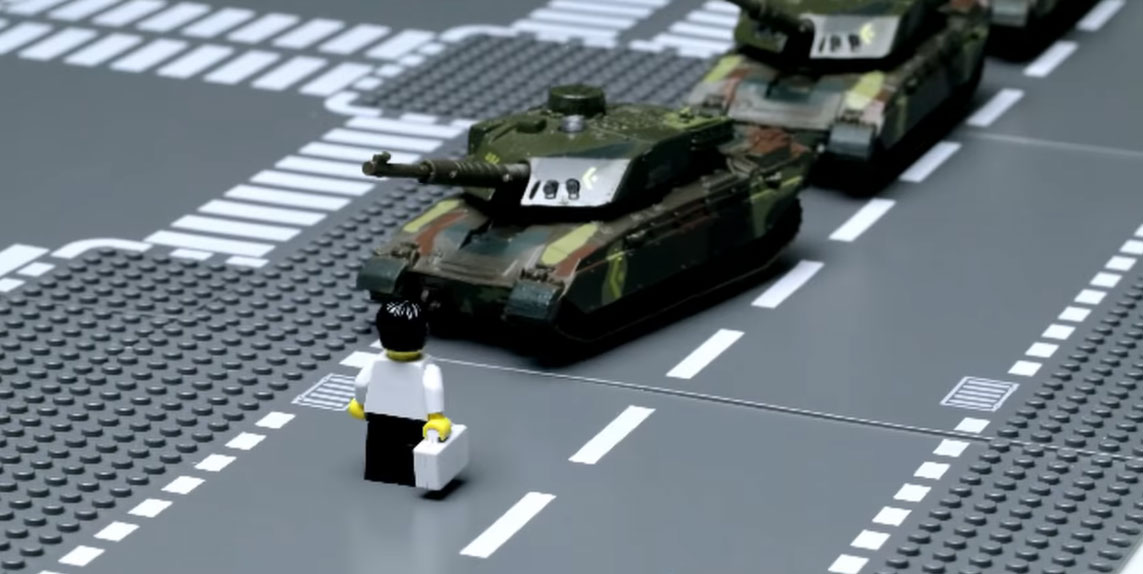
This is a stop-motion animated clip recreating a famous scene of rebellion using Lego.
The Tiananmen Square protests took place in 1989, when Chinese students demonstrated against the Communist government. The Chinese army moved in and killed many of the demonstrators. The image of a lone man standing up against the line of tanks became a resonant symbol of hope in the fight against oppression.
By using Lego, the tone of the song is kept light despite the seriousness of the image.
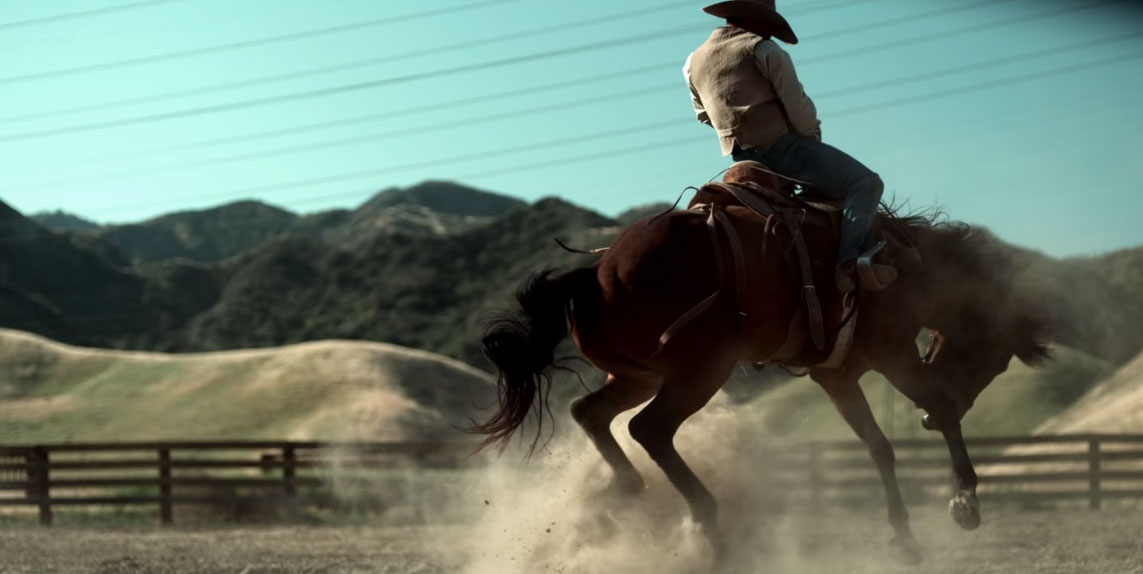
Long shot of a rodeo rider, in slow motion. Cowboys are often seen as symbols of living an independent life, close to nature.
This is one of many symbols of liberation and excitement that are scattered through the video, often in slow motion to emphasise the movement and to contrast with the scenes of oppression.
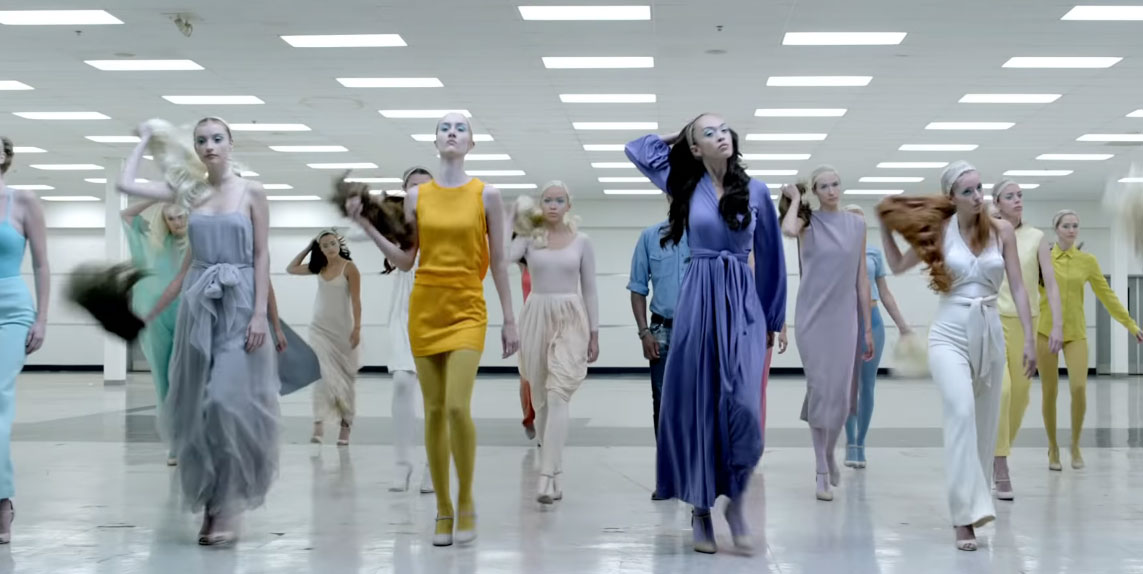
These female characters were introduced in earlier clips, all standing looking blank and emotionless. Even though they had different colour hair and clothes, there was something interchangeable about them. The cold white, low-ceilinged location looks like a factory.
Now, in this long shot, we see them tear off their hair and stride together (group shot) out of the frame.
This segment suggests that conformity - in this case to stereotypes of female beauty - is also a form of oppression which we need to rebel against.
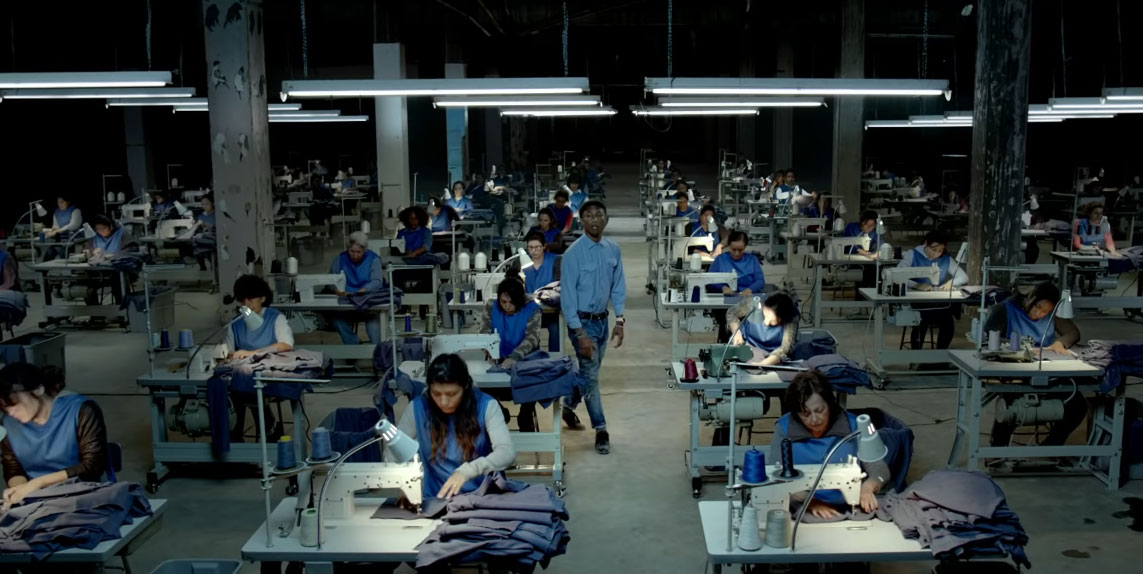
Wide shot of the sweatshop shows similarities with the location of the wig-models - reflecting the theme of solidarity across different human experiences.
The artist enters through the lines of workers in similar framing to the mine. Again this suggests he is a ‘man of the people’. His clothes are also a similar colour to those of the workers.
There is a similarly washed-out, blue-tinged colour scheme here to the other scenes of oppression - in contrast to vibrant colours of the traditional cultural scenes and shots of nature.
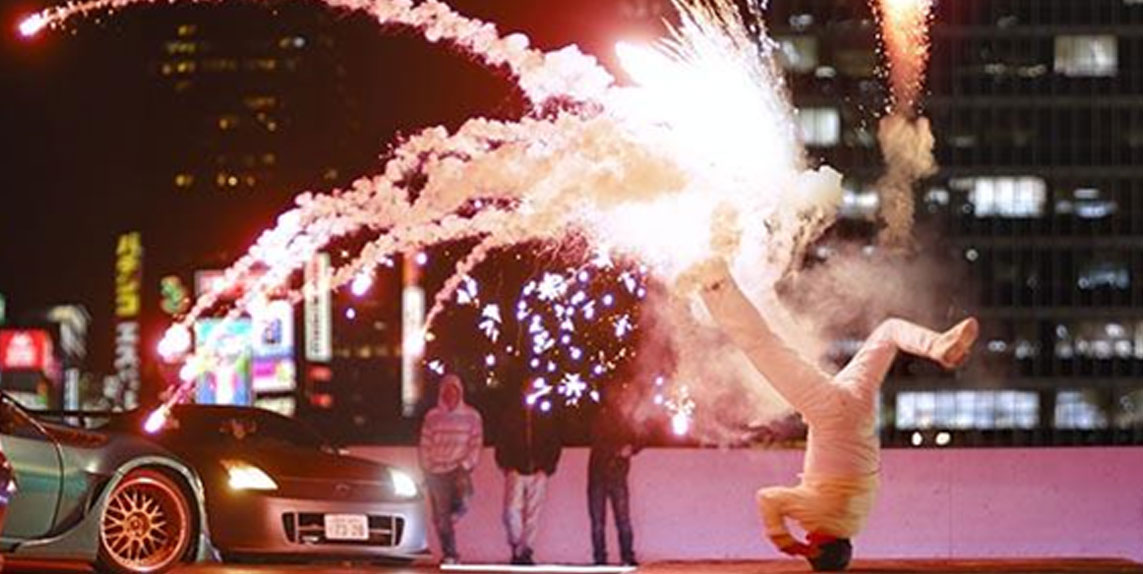
Another wide shot shows a more contemporary form of ritual: a breakdancer in an urban location. Unlike the earlier shots of the city, this location is light with bright pinks, illuminated by magical fireworks.
The spinning of the breakdancer is similar to the spinning traditional dancers shown earlier, establishing a link between ancient tradition and modern, urban culture.
The fireworks are another symbol of freedom and release.
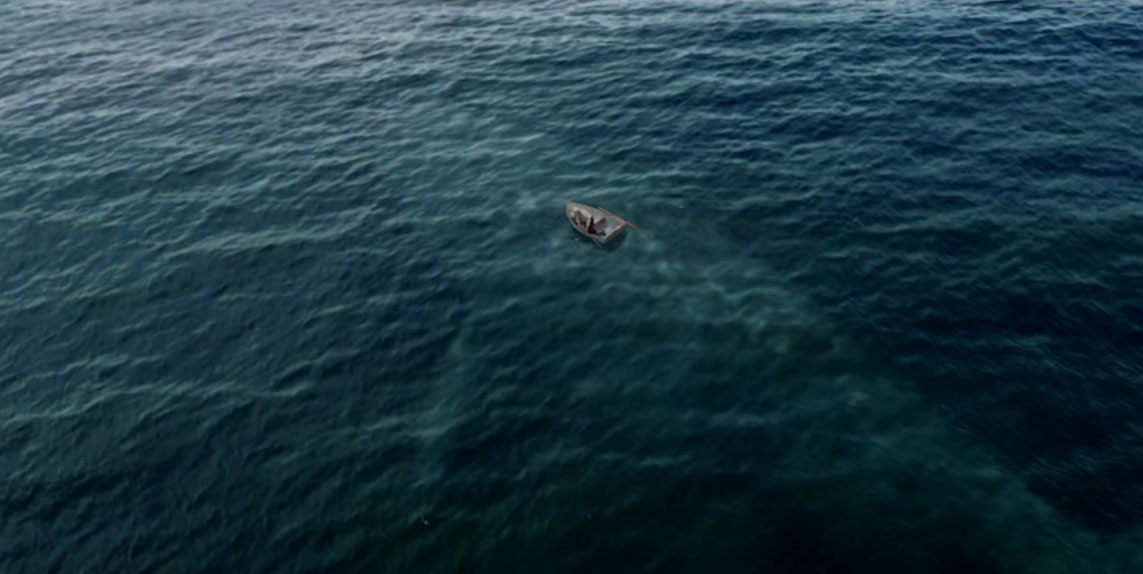
A wide angle, birds-eye-view of a tiny fishing boat with a huge whale swimming beneath. This symbolises both the enormity and power of nature, but also the harmony between man and his environment - neither being appears threatened by the other, there is peaceful co-existence.
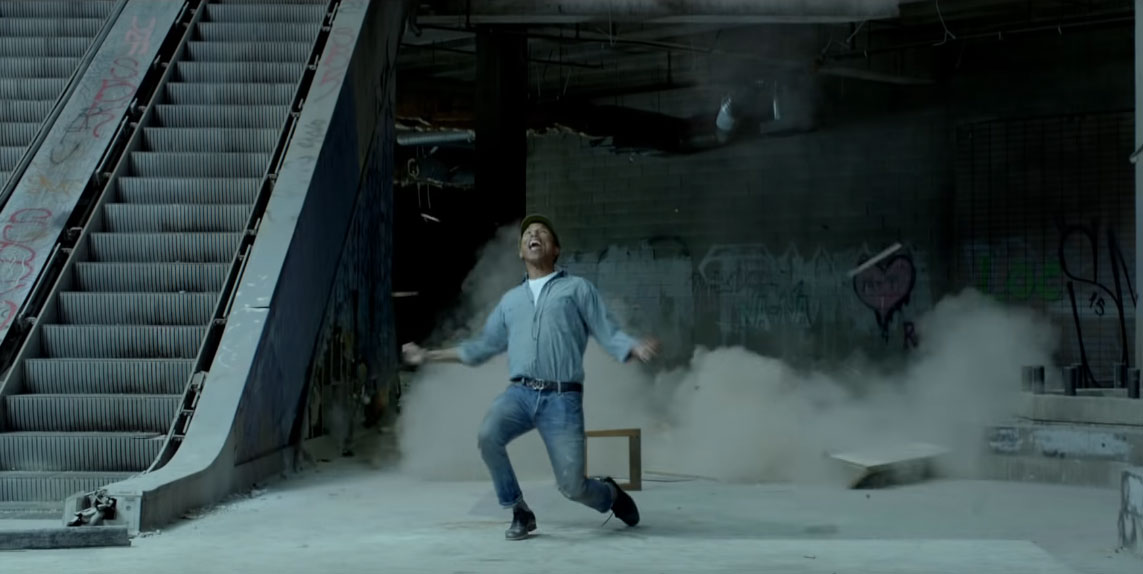
Another wide shot, showing the artist performing the climax of the song. His body language suggests fierce emotion and sincerity.
The falling piano exploding behind him emphasises the climactic moment.
The location appears to be an abandoned shopping mall, lit in a similar way to the other scenes of oppression. This could connote that Western consumerism is also a form of oppression; but one that will ultimately be defeated.